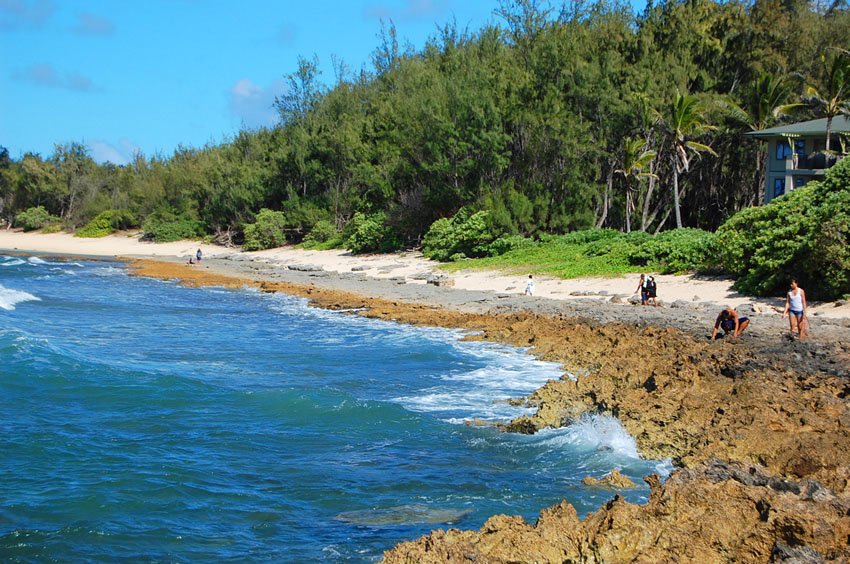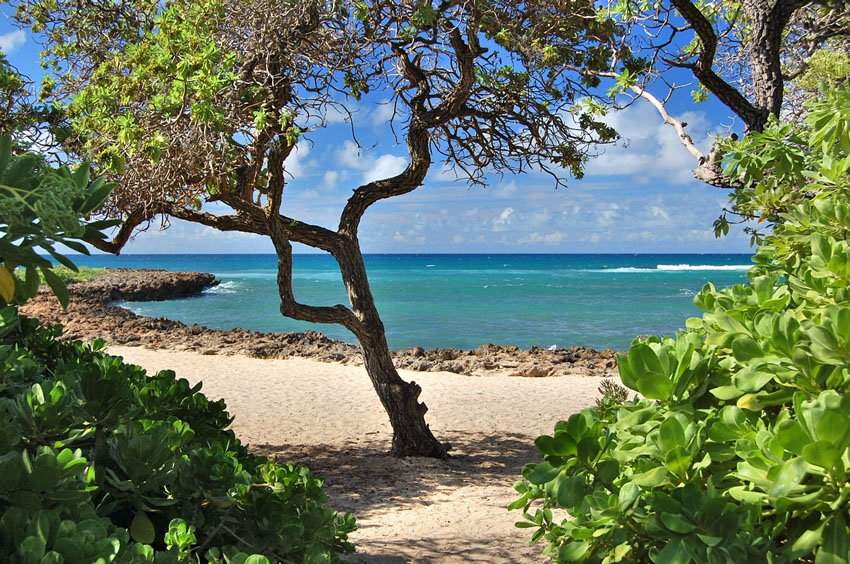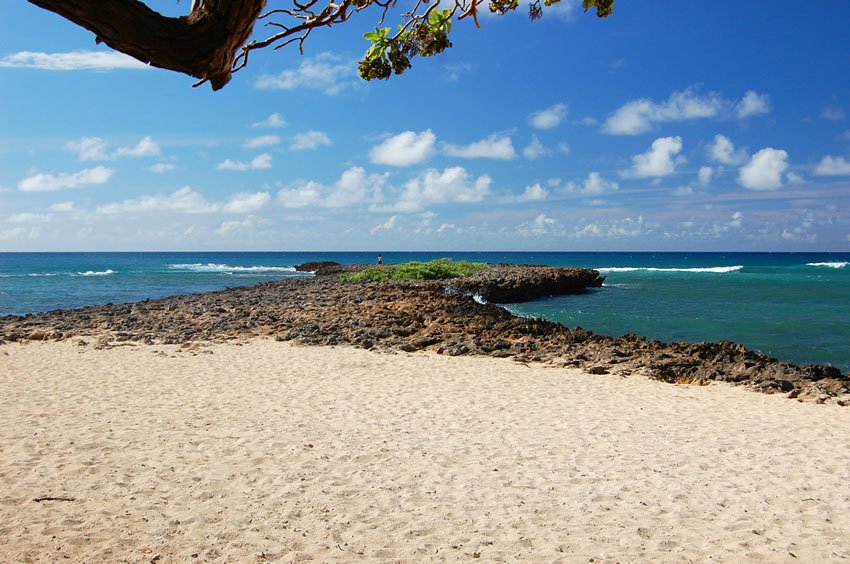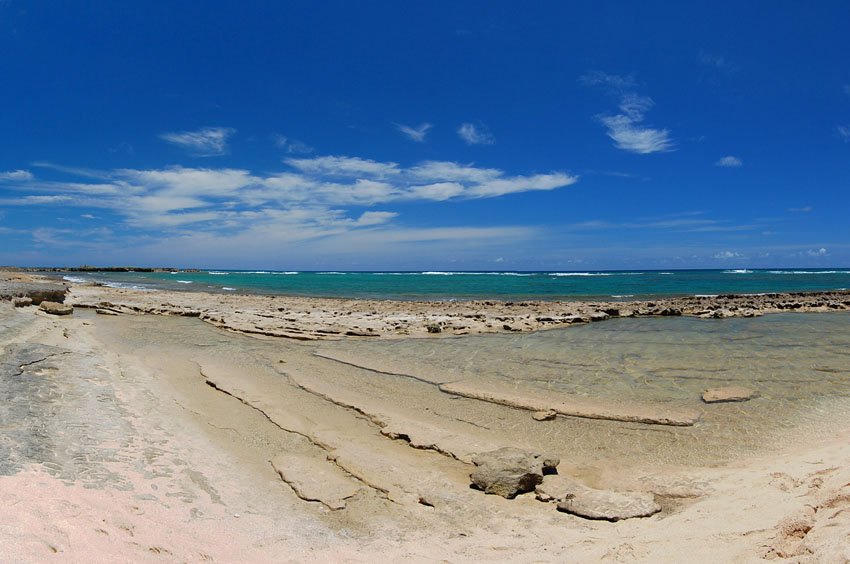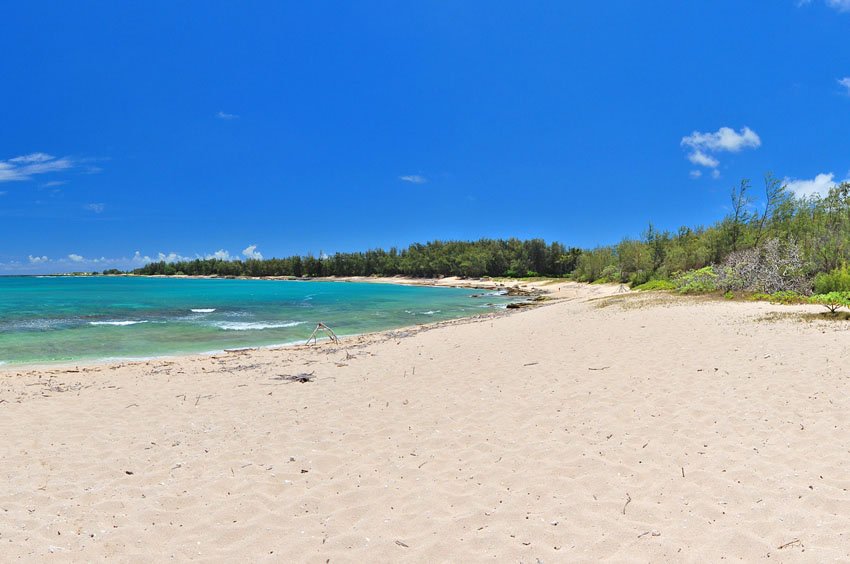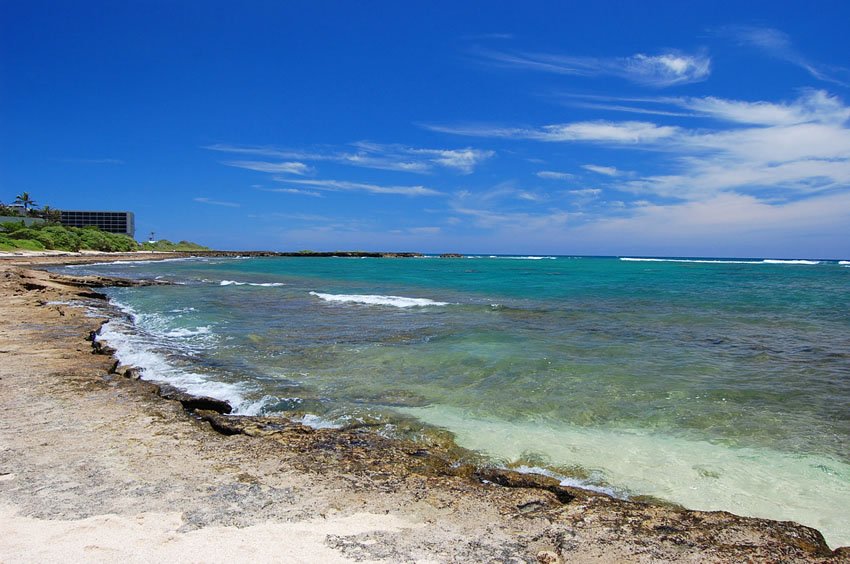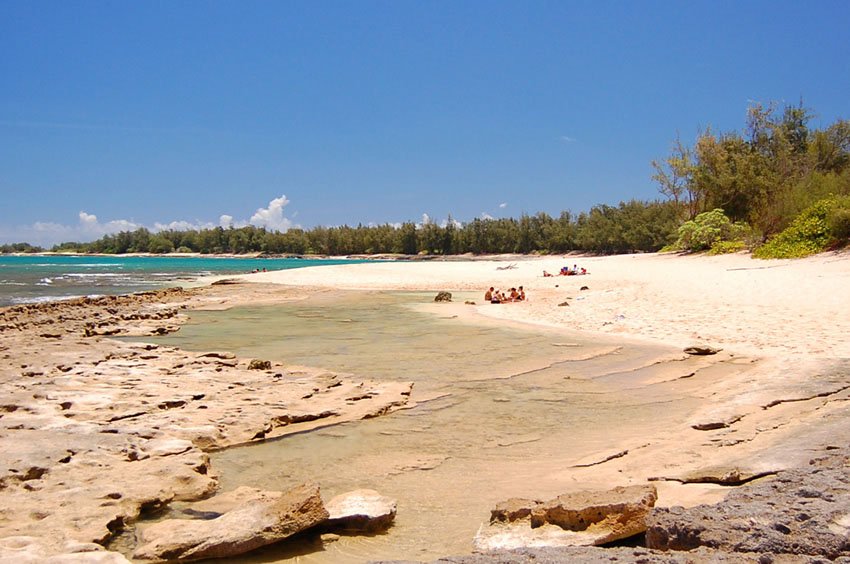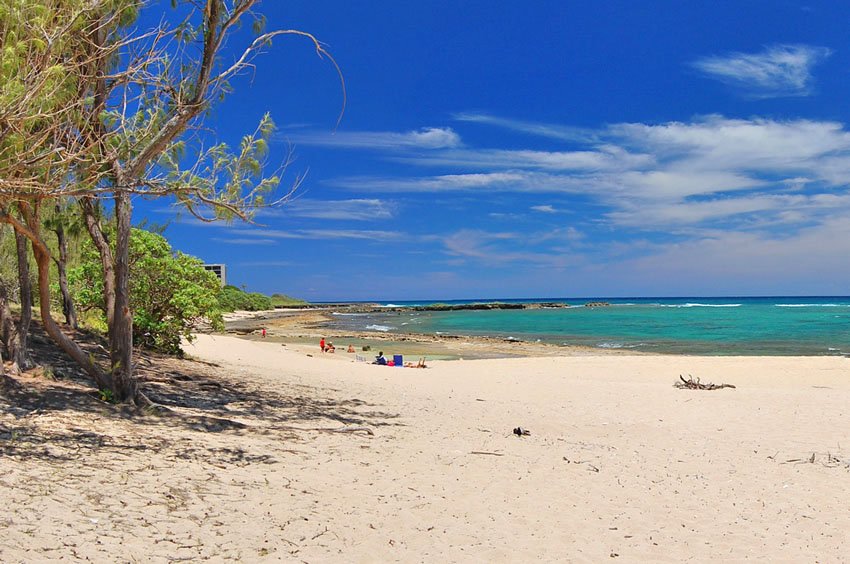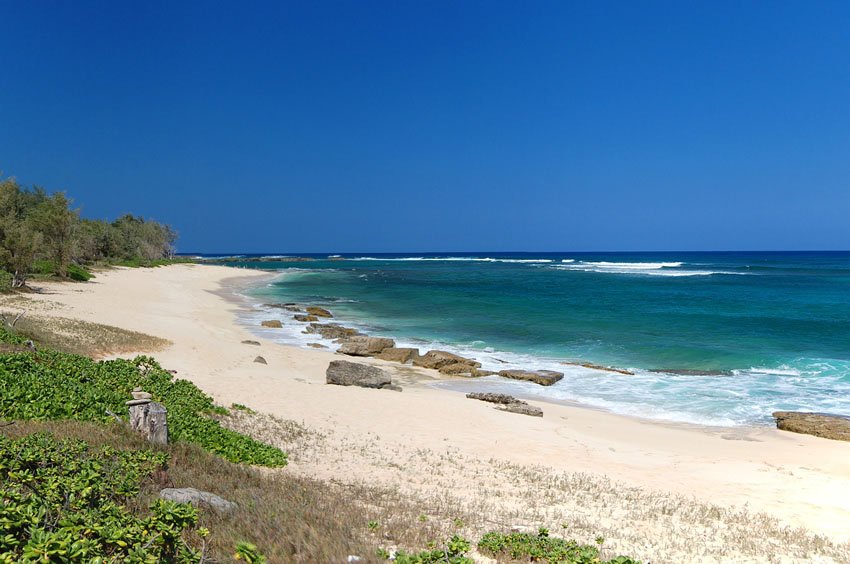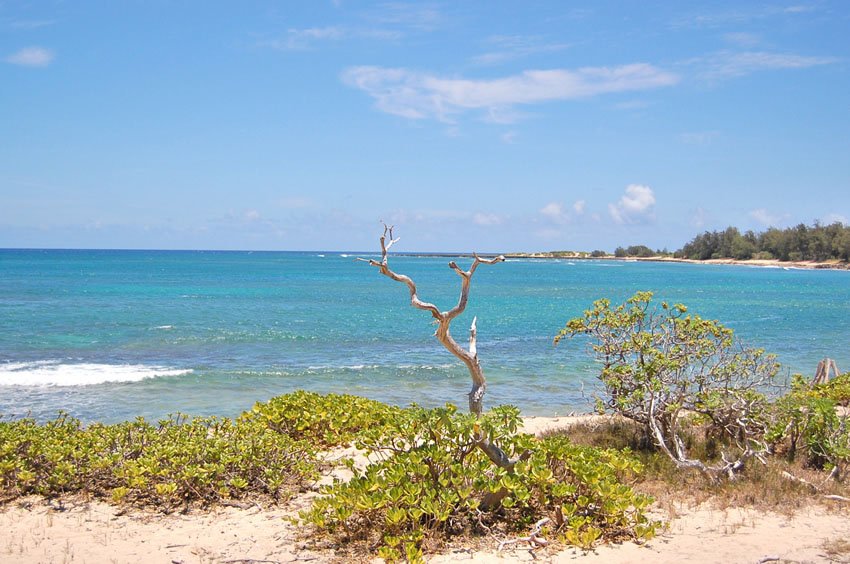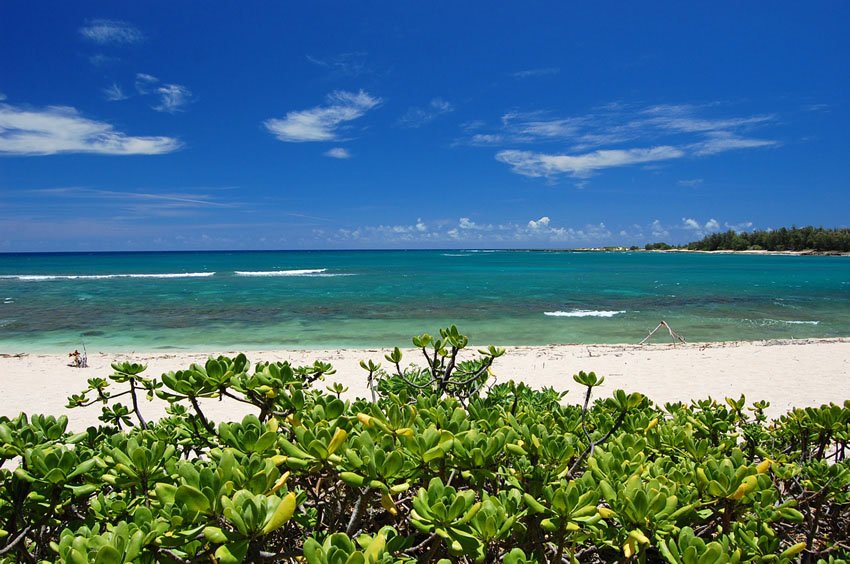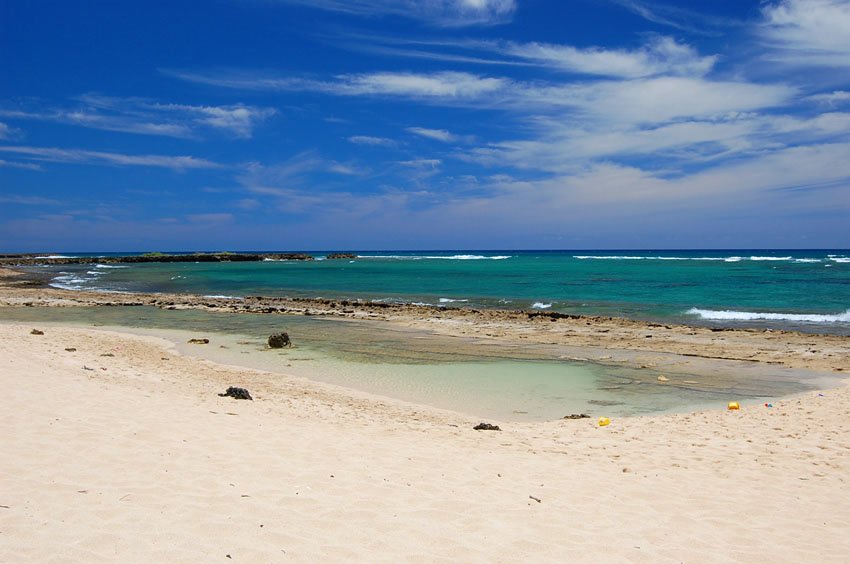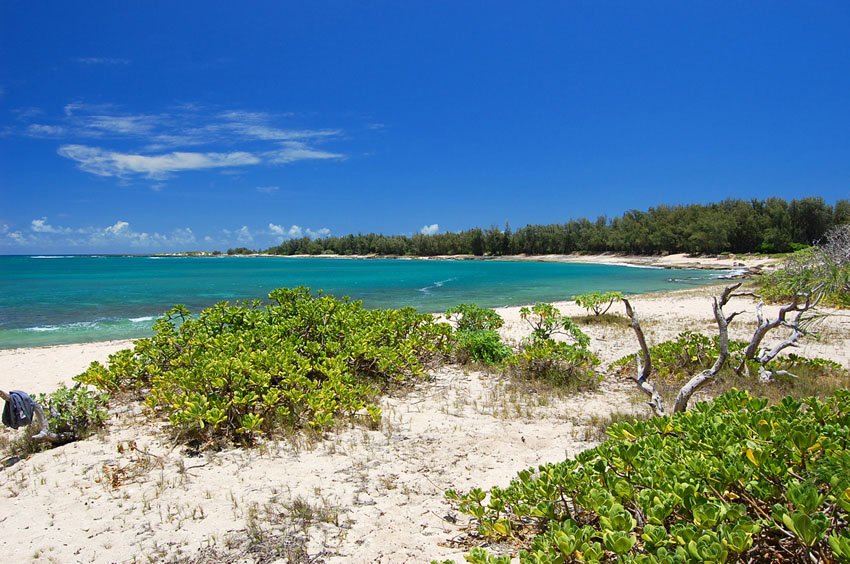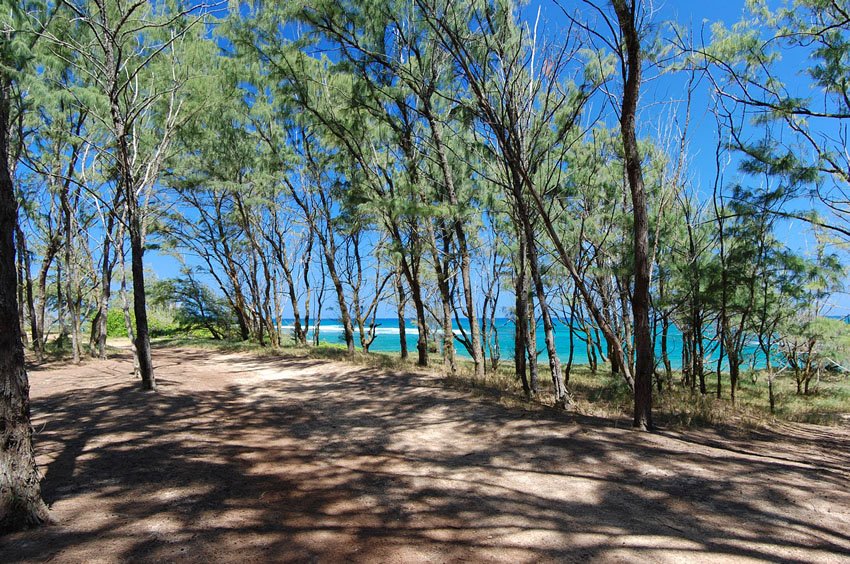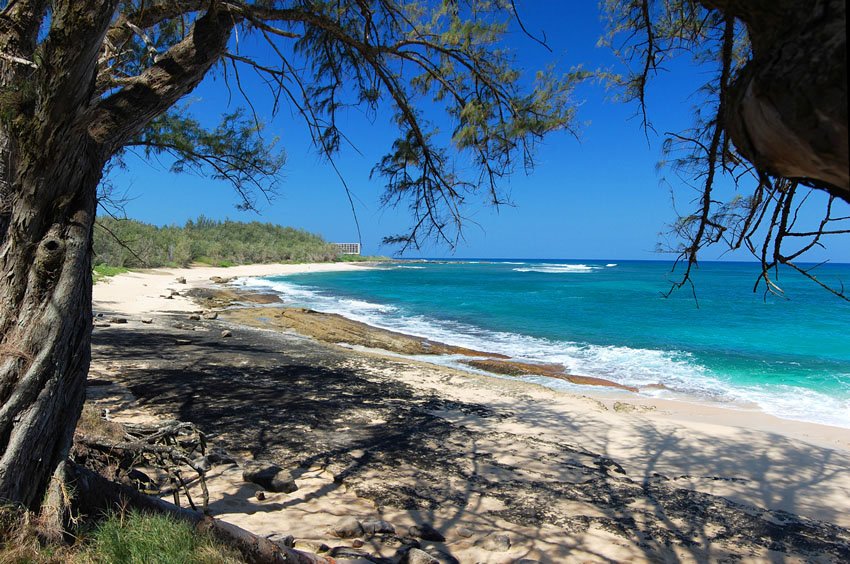Kaihalulu Beach
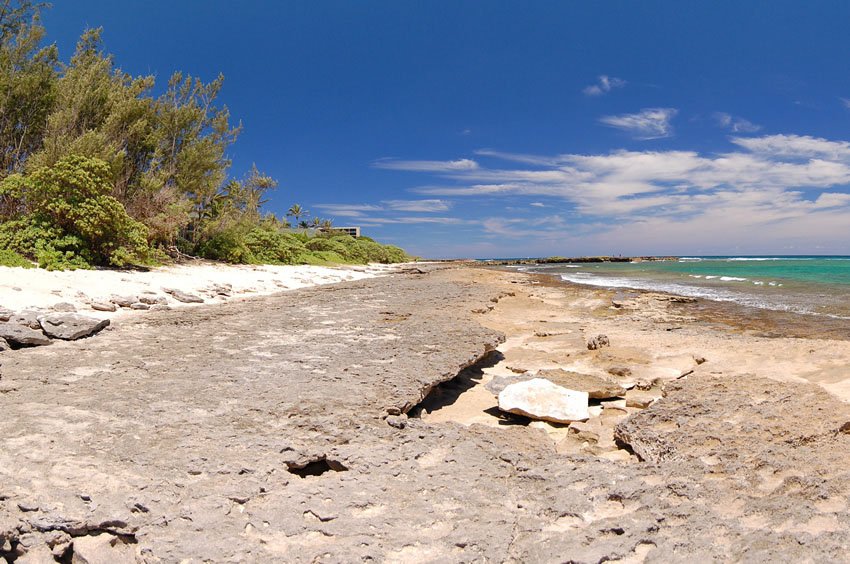
Kaihalulu Beach is a quiet stretch of sand just east of Turtle Bay Resort. Known for its long limestone shelf and limited development, it offers a peaceful escape for beach walkers, picnickers, and those interested in Hawaiian cultural landmarks like the Keiki Pool and ahupua'a altar.
Kaihalulu Beach, Oahu
Kaihalulu Beach (view panorama) × is located east of the Turtle Bay Resort on Oahu's North Shore. The beach doesn't see many visitors mainly because it's not a good beach for water activities such as swimming. The nearshore ocean bottom is rocky and a limestone shelf lines much of the bay. Some visitors have scratched their names and other symbols into the limestone shelf, which looks interesting – like modern-day petroglyphs (rock carvings).
Even though the swimming conditions are poor here, Kaihalulu Beach (view panorama) × is a nice beach for a long walk in peaceful surroundings. The coastline is mainly undeveloped (the beach is backed by a small forest as well as the Palmer golf course). To access the beach, park at the Turtle Bay Resort public parking lot and walk towards the right (behind the Beach House by Roy Yamaguchi restaurant). You can either walk in the sand or along a path that leads along the entire length of Kaihalulu Beach.
Near the center of the beach is a small protected wading area called Keiki Pool. "Keiki" means child in the Hawaiian language. A plaque marks the pool and says: "This natural pool was formed during the 1946 tsunami that pushed up two ocean bedrock formations creating a protected enclosure, making it much calmer than the surrounding waters."
Located right next to the walking path along the beach, there is a small Hawaiian stone altar. It is marked by a plaque that says: "This Hawaiian altar is an 'ahupua'a demarcation between the 'ahupua'a land division boundaries of Hanaka'oe to the west and Kahuku to the east. 'Ahupua'a - literally the altar ('ahu) of the pig (pua'a), it is the name for both a land division and the stone altar that serves as a marker. The 'ahupua'a system of land management was a cornerstone of traditional Hawaiian life and helped Native Hawaiians to develop one of the most sustainable methods of land use in the world. Extending from the forested mountain tops mauka (inland) or the wao akua (region of the gods), through the kula (open plains used for farming) and extending out into makai (ocean), each 'ahupua'a contained everything its inhabitants needed to sustain life."
Key Features of Kaihalulu Beach
- Long undeveloped shoreline: Perfect for beach walks, backed by a small forest and golf course
- Limestone shelf: Forms much of the shoreline, with etchings from past visitors resembling petroglyphs
- Keiki Pool near center of beach: A natural pool created by tsunami-raised bedrock
- Hawaiian altar: Cultural landmark marking ancient ahupua'a boundaries
- Not suitable for swimming: Rocky ocean bottom makes water activities difficult
Frequently Asked Questions
Can I swim at Kaihalulu Beach?
Swimming is not recommended due to rocky and uneven terrain. The beach is better for walking and sightseeing.
Is it good for photography?
Yes, the beach offers scenic views, lava rock pools, and cultural and natural sites like the Hawaiian stone altar and Keiki Pool.
How do I get to Kaihalulu Beach?
Park at the Turtle Bay Resort public lot and follow the beach trail eastward past the restaurant.
Is the area developed?
No, the area is largely natural, bordered by forest and a golf course, with no lifeguards or facilities.

















